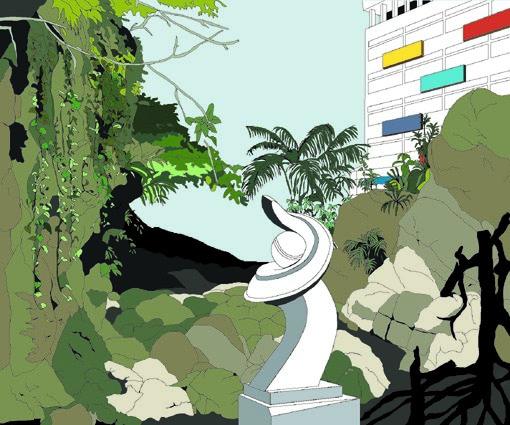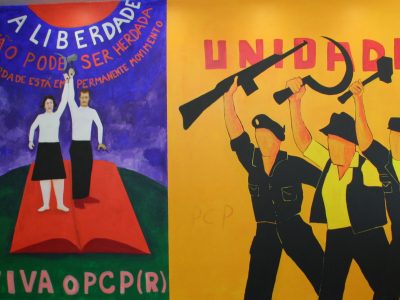Whenever It Starts, It Is The Right Time. Strategies for A Discontinuous Future
23.03.2007 — 06.05.2007
Opening: March 22, 2007, 7 pm
Is imagination a useful notion for a new way to define the role of artistic practice and its connection to social research?
The exhibition Whenever It Starts It Is The Right Time – strategies for a discontinuous future at Frankfurter Kunstverein departs from the notion of imagination as defined by the Greek philosopher Cornelius Castoriadis (1922-1997): imagination is a creative power intimately linked with the epistemic act; that is, with our capacity to postulate other realities, a faculty directed towards agency. In this way, this show is about the notion of ‘enacted imagination’ versus the old notion of utopia. The notion of the enacted imagination relates to the avant-garde project of the early 20th century – the question of how to relate art to life and how to imagine the world differently. Of course the project itself became problematic and ultimately failed in many ways – but it still provides a qualitative challenge to the modernist legacy that now has become simply a question of aesthetics. The avant-garde tradition, insofar as it has a link to contemporary art, is a hermeneutic practice, one that talks about content and meaning at least as much as about form. The artists presented in Whenever It Starts It Is The Right Time are no longer – and that is possibly the only thesis of this project that can be proven right or wrong – concerned with escaping the category of art, but engaged in using the space that art and even the art institution can provide to constitute new spheres of thinking, feeling, reflecting and exchanging. All of the works in the exhibition have at least one trait in common: a will to re-establish a new relationship with some of the questions of modernity through the idea of enacted imagination, such as the vital belief in agency. Art production is a system of interpretation that is able to engage in endless points of departure, ‘soften up’ the bureaucratization of tradition and create new routes, new systems of reference.
Whenever It Starts It Is The Right Time constitutes an effort to demarcate some obsessive concerns in contemporary art and discursive practice through the presentation of very diverse working methodologies, developed in enormously different social contexts and historical times. The way imagination is enacted in this exhibition is intended to open up questions relating to, for example: the deconstruction of historical memory and the possibility of a productive relationship with the avant-garde project, the problem of representation as a form of appropriation, and the theoretical and critical models that we still need to explore at the core of a collective effort like the one represented by an exhibition context.
Therefore this show can be described as a collective exhibition rather than a ‘group’ show. A collective exhibition can be understood as a parliament of forces and is hence not intended to illustrate any given thesis but to produce new significance at the level of each work and from the rapports and frictions that arise between them. This ‘parliament’ creates a space through the co-existence of works that are, on the one hand, extremely aware of the project of modernity and, on the other, critical towards the limits modernity imposed on the reflection of visual culture. As an exhibition, Whenever It Starts It Is The Right Time works towards a synthesis of sensory perception and conceptual processes. This is founded on a belief that the aesthetic experience, conceived as imaginary agency, is not solitary and contemplative, but active and collective, and located in the midst of our culture. The intention of the project is not to survey, but to transform the institution into an operational field where all works provide the viewer with a set of conditions in order to establish a personal relationship with each and every work.
As the Argentinean conceptual artist Alberto Greco (1935-1965) once stated, “an art work has meaning as long as it is made as a total adventure”. An exhibition should be conceived under the same premise.
A catalogue was published in connection with the exhibition by Revolver Verlag, Frankfurt am Main.
Participating Artists: Ibon Aranberri (E), Thomas Bayrle (D), Egle Budvytyte (LT), Raimond Chaves (COL), Marcelo Cidade (BRA), Simon Evans (UK), Luke Fowler (UK), Dora García (E), Anna Bella Geiger (BRA), Ryan Gander (UK), Joana Hadjithomas & Khalil Joreige (LBN), Lasse Schmidt Hansen (DK), David Hatcher (NZ), Martin Hoener (D), Maria Loboda (D/PL), Franz Mon (D), Adrian Piper (USA), Mathilde Rosier (F), Setareh Shahbazi (IRN), Martin Skauen (N), Sue Tompkins (UK), Mario García Torres (MEX), Gerhard Wittner (D)


